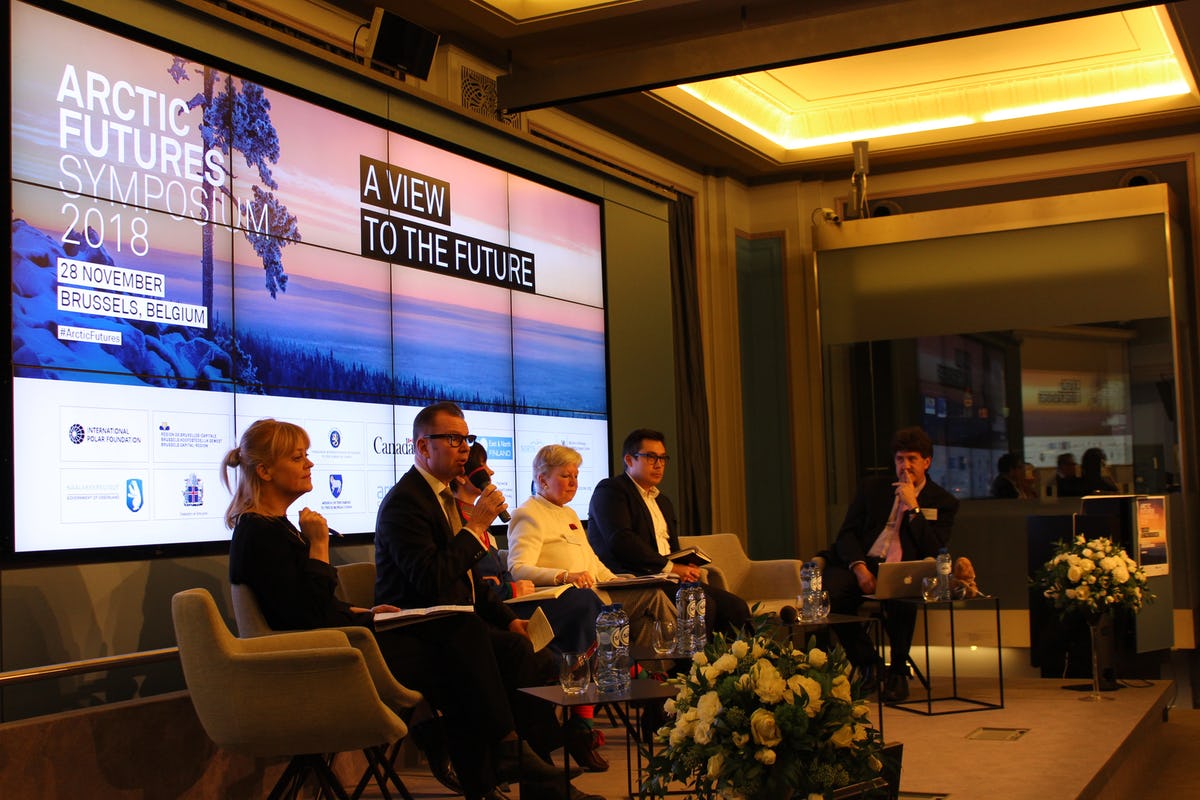The EU’s Arctic Policy: Between Vision and Reality

Marie-Anne Coninsx (third from the right), the EU’s Ambassador at Large for the Arctic, taking part in a high-level discussion on Arctic issues at the 2018 Arctic Futures Symposium in Brussels. Photo: International Polar Foundation
The European Political Strategy Centre – the European Commission’s in-house think tank – has recently produced a foresight analysis, entitled Walking on Thin Ice: A Balanced Arctic Strategy for the EU and proposing the renewal of the European Union (EU)’s Arctic policy. One of its key recommendations is to prepare a new Joint Communication on Arctic matters.
Ever since 2007-2008, the EU’s main institutions have developed a dedicated set of Arctic-related documents, defined positions and expressed the EU’s very own ‘Arcticness’. By 2019, ten Arctic policy documents have been produced: three (Joint) Communications by the Commission (and the High Representative); three related Conclusions by the Council; and four Resolutions by the European Parliament (EP). Essentially, these documents identify the EU as part of and linked to the Arctic, affecting and affected by the Arctic. The latest rendition of the Commission and HR, issued in 2016, to outline an EU Arctic vision was structured around three broad themes:
- Climate change and safeguarding the environment;
- Sustainable development in the (European) Arctic
- International cooperation on Arctic issues.
This College of Europe Policy Brief (CEPOB) policy brief adds to the ongoing discussion by considering whether a new Joint Communication is needed at this time and how it could differ from previous EU Arctic statements. First, we present a brief history of the EU’s Arctic endeavour and consider new developments – including geopolitical changes – in the region since the latest EU-Arctic policy statement adopted in 2016. We then reflect on possible ideas for a future policy statement and the lack of an EU Arctic vision, and conclude by assessing policy options and their respective limitations.